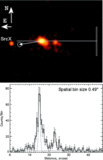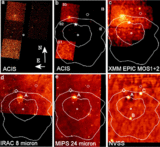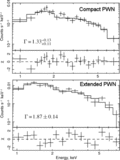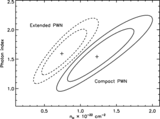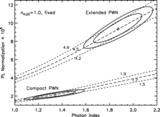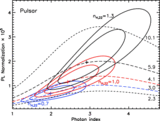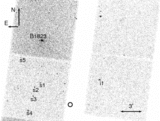Image Details
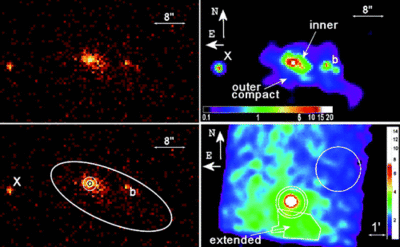
Caption: Fig. 1.
Top left: The ﹩77^{\prime \prime }\times 48^{\prime \prime }﹩ ACIS‐S3 image of B1823 and its PWN (0.7–7 keV; pixel size 0.49﹩\arcsec﹩). Top right: Adaptively smoothed image (0.7–7 keV; pixel size 0.49﹩\arcsec﹩) of the same region obtained by removing the pipeline pixel randomization and applying the subpixel‐resolution tool (Tsunemi et al. 2001; Mori et al. 2001). Bottom left: Same image as in top left, but showing the extraction regions used for the spectral analysis of the PWN and the pulsar (see § 2), where "b" and "X" mark the blob in the compact PWN and a point source unrelated to the PWN, respectively. Bottom right: Heavily binned (pixel size 3.94﹩\arcsec﹩; 0.5–8.0 keV) and smoothed (with a Gaussian kernel of ﹩r=27^{\prime \prime }﹩) ACIS‐S3 image of B1823 and its surroundings. The brightness and smoothing scales are chosen to stress the fainter, more extended emission south of the compact PWN. The polygon shows the region from which we extract counts for the spectral analysis of the large‐scale extended emission, with the background estimated from the ﹩r=1.28﹩﹩\arcmin﹩ circle northwest of the PWN. The annulus around the compact PWN is used for measuring the compact PWN background.
Copyright and Terms & Conditions
© 2008. The American Astronomical Society. All rights reserved. Printed in U.S.A.


